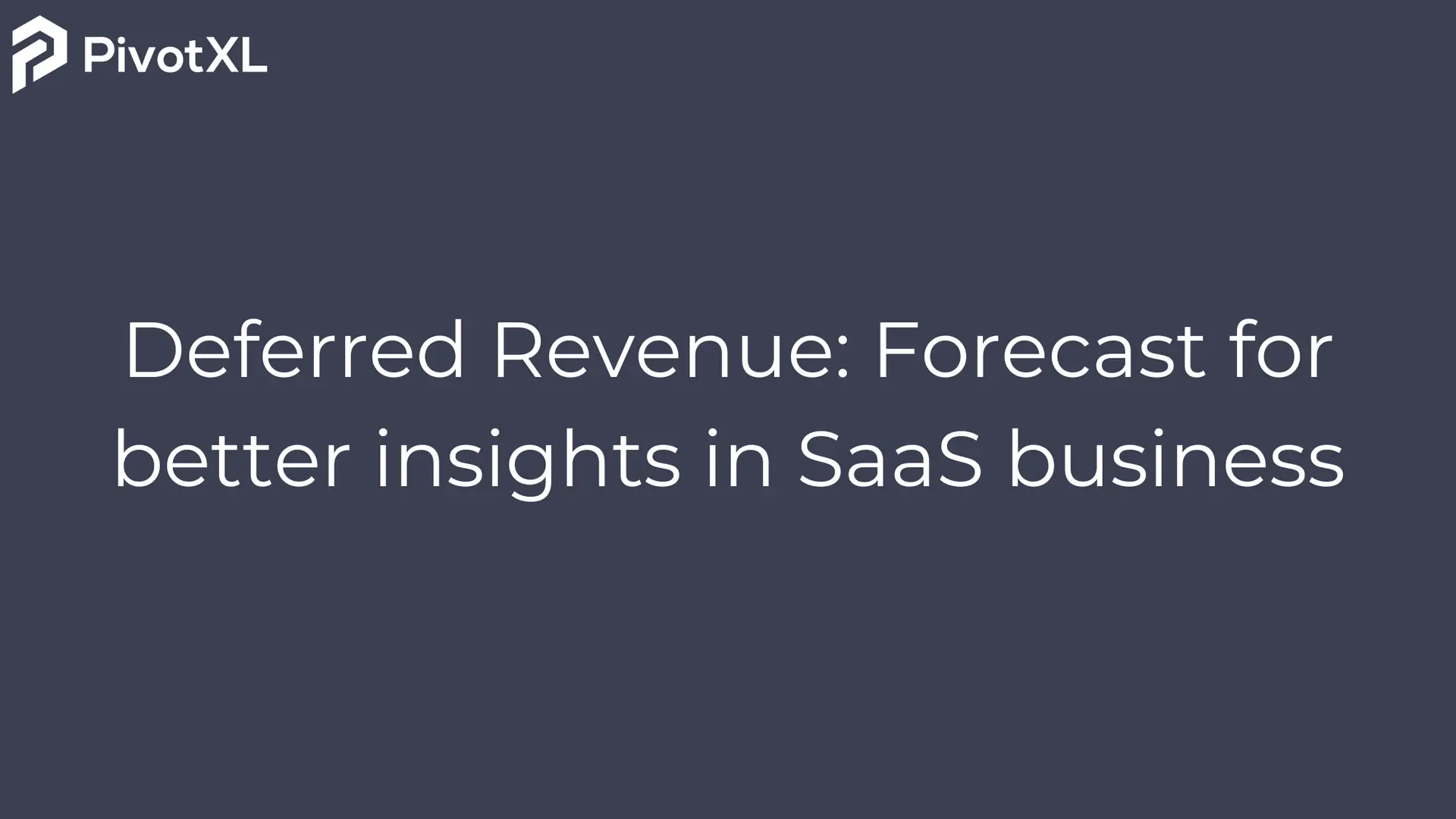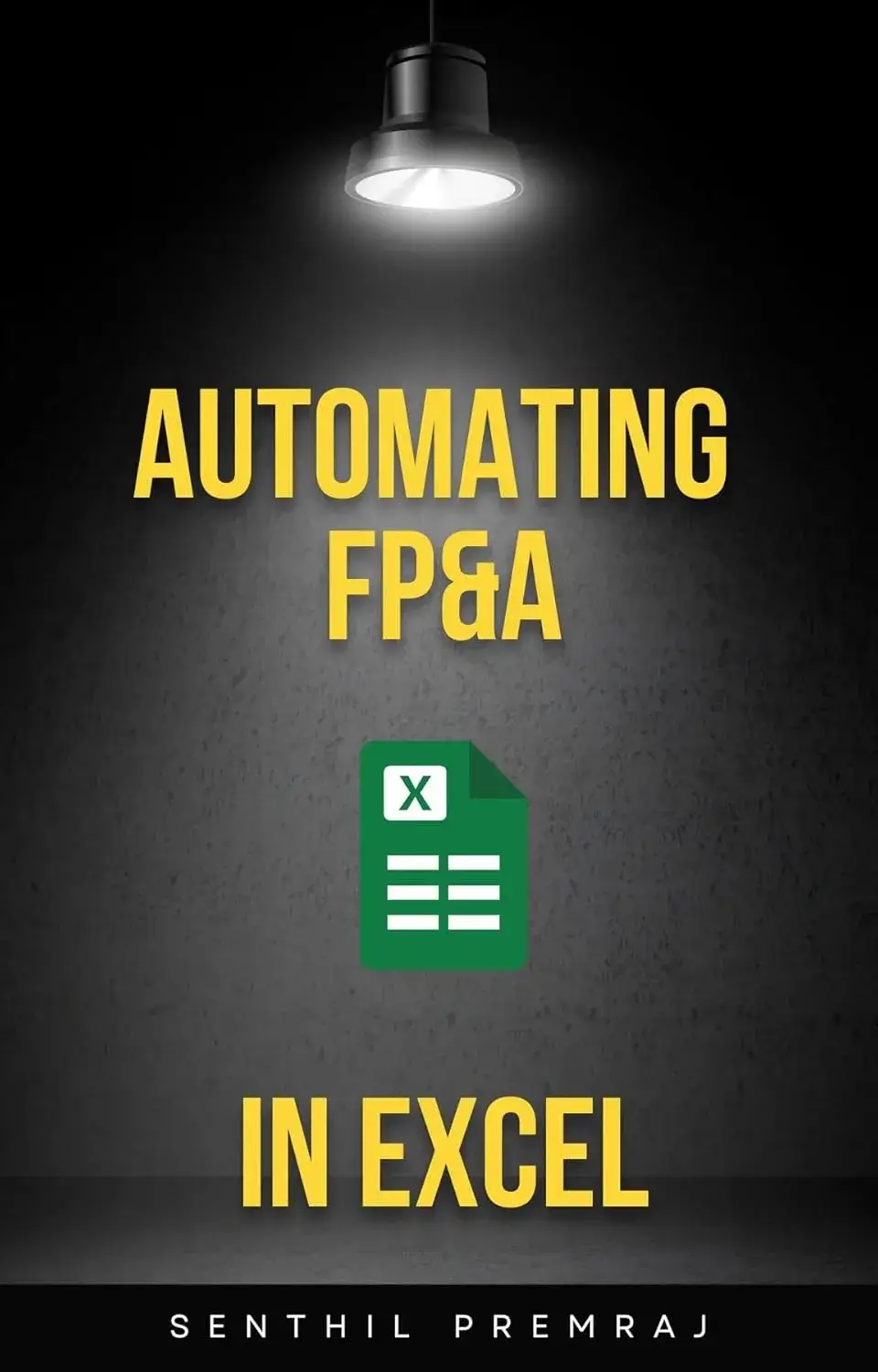Introduction
Basic accounting principles suggest that a business should not recognize income until it has earned it. But, what does this mean for your SaaS business where customers typically pay upfront for subscriptions? How do you forecast revenue from services sold but yet to be delivered?
This is where forecasting deferred revenues comes in. Accurate forecasting of deferred revenues ensures compliance in financial reporting and also provides insights into future cash flows and the financial health of your business.
In this article, we will explore everything you need to know about forecasting deferred revenues for your SaaS business — including methodologies, a step-by-step process, the challenges involved, and the use of technology to facilitate the entire process.
Understanding Deferred Revenue in SaaS
In SaaS, not all payments are “earned” right away because subscription-based services get used over time. When customers pay upfront, the amount received in advance is known as “deferred” or “unearned revenue.” Deferred, in this context, means the act of delaying the recognition of certain revenue.
Deferred revenues is treated as a liability in your balance sheet because it’s unearned. Over time, as services are consumed (i.e., the product is delivered), the associated revenue is moved from your balance sheet accounts to your income statement as revenue.
How to Calculate Deferred Revenue
You can calculate deferred revenues by subtracting recognized revenue from the total value of invoices:
Formula for Deferred Revenue:
For example, imagine a customer opts for a yearly subscription with a total contract value of $24,000. When the customer pays upfront for the year on January 1st, you record the $24,000 as deferred revenue because you haven’t provided the services yet.
As you deliver the service each month, you recognize $2,000 (one-twelfth of the total subscription cost) as earned revenue. So, by the end of January, $2,000 is moved from deferred to accrued (earned) revenue, and you have $22,000 in deferred revenue remaining.
The same process continues throughout the contract. The deferred revenue balance decreases as the amount of recognized revenue increases.
By the end of the second month, the deferred revenue would be $20,000. By the end of the third month, it would be $18,000, and so forth.
At the end of the contract, once all obligations are met, all revenue will be recognized, with none deferred.
Why Should You Forecast Deferred Revenue?
Forecasting deferred revenue gives you a glimpse into how your SaaS business will perform in the future. For instance, a consistently growing deferred revenue indicates upcoming growth as more customers subscribe to the service. Conversely, a decline in deferred revenue indicates potential customer churn.
Tracking and forecasting your unearned revenue also allows finance teams to forecast cash flows. Being able to time your cash flows further enables you to do better sales capacity planning, invest in new initiatives, and manage other expenses better.
Forecasting Deferred Revenue Begins with Forecasting Revenue
Revenue forecasting in SaaS provides the foundation for deferred revenue forecasting. This is because forecasting deferred revenue is only relevant in the context of the revenue you expect to generate. Thus, revenue and deferred revenue are intrinsically related.
While you can do revenue forecasting in SaaS using spreadsheets, it’s always going to be more accurate and efficient if you combine one/more technologies such as financial forecasting software and revenue forecasting tools like PivotXL with the following best practices:
- Define the key revenue metrics you want to measure based on your business’s services.
- Gather historical data based on past performance.
- Choose a revenue forecasting model. Some of the standard models include historical forecasting, lead-driven forecasting, lifetime value forecasting, and opportunity forecasting.
- Leverage scenario planning that includes best case, worst case, and normal scenarios to account for market trends, different factors, and uncertainties.
How to Forecast Deferred Revenue
Once you have a revenue forecast, you can forecast your deferred revenue. There are two main approaches to this task. We refer to them as the “accurate to a cent” method and the “back of the napkin” method.
“Accurate to a Cent” Method
Forecasting deferred revenue down to the penny requires a detailed and precise technique. This method tracks every contract and every transaction over its entire term. It determines exactly how much deferred revenue remains at any given time.
Pros and Cons
This method is very accurate. However, it requires tracking a lot of data. That makes the process time consuming. It is likely best for smaller businesses.
Larger businesses can also use this method. They might break their data into clearly defined segments. This way, individual forecasts can be created for each segment rather than one for the entire business.
Step-by-Step Process
Step 1: Create a Revenue Recognition Schedule
Begin by gathering all existing contracts with customers. Record details like the average contract value (ACV), contract length, and start date. With this information, map out the expected payments over time through the end of each contract.
Step 2: Create a Deferred Revenue Schedule
For the same contracts, start with the ACV recorded at the contract start date. Over time, this amount decreases as services are rendered and revenue is recognized.
Step 3: Update Schedules with Every Transaction
It is important to update both schedules with every transaction. As services are delivered, move the deferred revenues from the deferred revenue schedule to the revenue recognition schedule. Update these schedules with any new transactions and contracts before forecasting.
Step 4: Summarize Total Deferred Revenue
With your schedules up to date, forecast the deferred revenue for your existing contracts by summing up the total amount in the deferred revenue schedule..
“Back of the Napkin” Method
This method uses the expected market growth rate applied to current growth. It makes rough estimates and quick calculations based on historical data and broad assumptions. It does not require detailed contract specifics.
Overview
The “back of the napkin” method provides a higher-level view of deferred revenues forecasting. It is far less time consuming than the detailed approach. Although it is not as precise, it still offers reasonably accurate results.
Large companies with many contracts may prefer this approach. It gives a quick snapshot of expected revenue trends. It is especially helpful for initial planning or strategic decision-making.
Step-by-Step Process
Step 1: Gather Historical Data
Collect historical revenue data from past income statements. Also, gather historical deferred revenues data from balance sheets for the same period.
Step 2: Calculate a Deferred Revenue Ratio
Use the historical data to calculate a ratio. This ratio shows deferred revenues as a percentage of revenue. Then, apply this percentage as a rolling average to each month of your forecast period.
Step 3: Forecast Revenue
Forecast your revenue for the same period. Multiply the forecasted revenue for each month by the corresponding deferred revenues ratio. This will predict the amount of deferred revenues.
Step 4: Analyze Trends and Prorate
Another approach is to analyze historical trends and apply the same assumptions you use for revenue growth. This can also yield a reliable forecast for deferred revenue.
For example, if your total revenue this year is $1 million and you aim to grow to $2 million next year, you anticipate doubling your revenue. In this case, you would apply a similar growth rate to forecast your deferred revenues.
Choosing the Best Deferred Revenue Forecasting Method
Both approaches have their merits. Your decision depends on the level of accuracy you need and the time you have available.
If you choose the detailed “accurate to a cent” approach, you may face complexities related to contract terms. This method tracks revenue at the individual contract level.
Considerations Based on Contract Structure
Contract Length
Examine the average contract periods from the previous year. Use these durations to predict the average period for future agreements.
Services Rendered
Forecast deferred revenues based on historical trends in task completions. For instance, if a contract stipulates that revenue is earned upon completing tasks A, B, and C, then your forecasts must reflect these terms and conditions.
Always factor in any changes in the structure of your contracts. These changes might include new service offerings, modifications to contract terms, or changes in the payment structure (e.g., annual, semi-annual, or quarterly). Such changes can affect how deferred revenues is calculated.
Tips for Forecasting Deferred Revenue
Here are some quick tips to improve the accuracy of your deferred revenues forecast:
- Stay Up to Date on Contract Terms:
Track all details of customer contracts. Include payment schedules, contract lengths, and specific service deliverables. Standardize your contract terms as much as possible. - Determine Revenue Recognition:
Decide if your company recognizes revenue based on time (e.g., monthly, quarterly) or upon completing specific obligations (e.g., milestones or deliverables). - Follow Applicable Accounting Standards:
Use standard accounting frameworks such as GAAP or IFRS. This ensures compliance, credibility, and reliability in your forecasts.
Challenges of Forecasting Deferred Revenue in SaaS Startups
Forecasting deferred revenues in SaaS startups can be complex. As the customer base grows, these challenges may become more pronounced.
Challenge 1: Usage-Based Pricing Contracts
Usage-based pricing can introduce uncertainty into revenue forecasting. It makes deferred revenues forecasting more difficult.
For instance, consider a client billed a minimum of $1,000 per month over 12 months, totaling $12,000 paid in advance. However, actual usage may vary. It might exceed or fall short of this minimum.
Initially, when billing $12,000, $1,000 is recognized as revenue for the current month. The remaining $11,000 is deferred to subsequent months. But if usage increases to $1,500 the next month or if additional charges occur (for add-ons, training, etc.), the amount of revenue recognized will change. This change also affects the amount of deferred revenues.
Challenge 2: Market Fluctuations
Sudden market fluctuations can lead to changes in customer contracts. Renegotiations or shifts in terms may impact how deferred revenues is recognized over time.
For example, a customer may initially subscribe to a high-tier plan at $5,000 per month. During a market downturn, the customer might downgrade to a lower-tier plan at $2,000 per month. This downgrade introduces uncertainty. The forecast for future deferred revenues must then be recalculated based on the lower subscription fee.
Leverage Technology to Make Deferred Revenue Forecasts More Accurate with Less Effort
Forecasting deferred revenues is critical to ensuring your company’s financial health. While spreadsheets are useful, they are prone to errors. They also become unwieldy as your business grows.
Using a SaaS financial planning and analysis (FP&A) platform like PivotXL provides additional value-added benefits to make the process far simpler, allowing you to achieve a higher degree of accuracy in your forecasts with far less effort.




